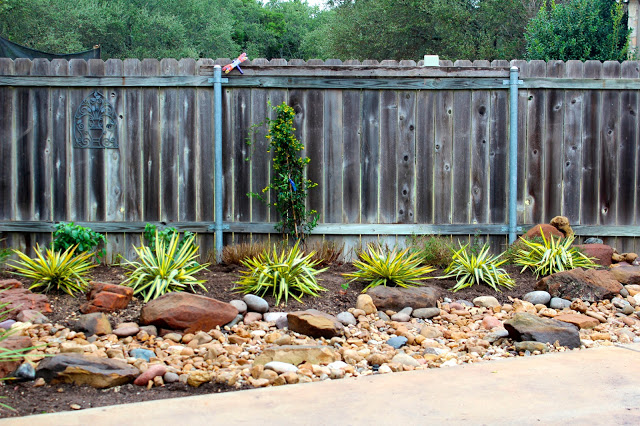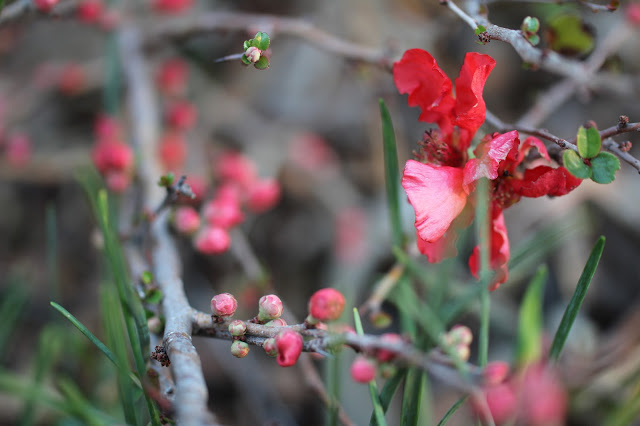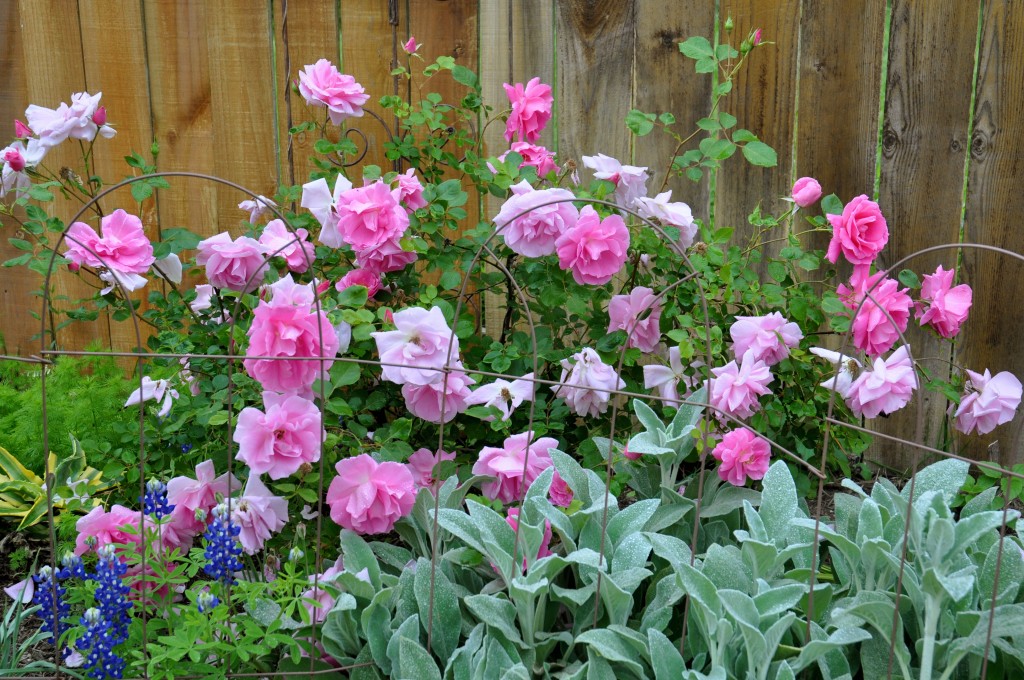February Tip: Alternative Lawns
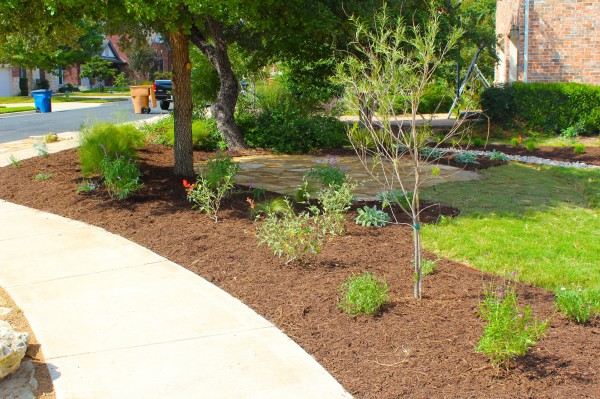
Our recent drought has made more than a few homeowners reconsider the composition of their landscape. Lawn replacement choices run the gamut from low-maintenance beds to welcoming patios, paths ad dry creeks to enticing features like water features, play spaces, gazebos and fire pits.
While xeric or drought-tolerant plants require less water, all plants need to be watered. When planted, they will require regular watering for several months to get them started, but will then be less thirsty than other non-native or adapted plants. In addition to flowering plants like lantana, salvia, yellow bell, damianita, skullcap, plumbago, catmint, and blackfoot daisy, to name just a few, many xeric grasses and sedges can also be used in a smaller area en mass to create a grassy, non-traditional green space. Groundcovers and creeping plants can also be used to take up lawn space – some of those that work well here include Asian jasmine, sweet potato vine, silver ponyfoot, purple heart, wooly stemodia and a variety of thymes.
The Lady Bird Johnson Wildflower Center (www.wildflower.org) center maintains an excellent database of native plants — their needs and characteristics – that grow well in Central Texas.


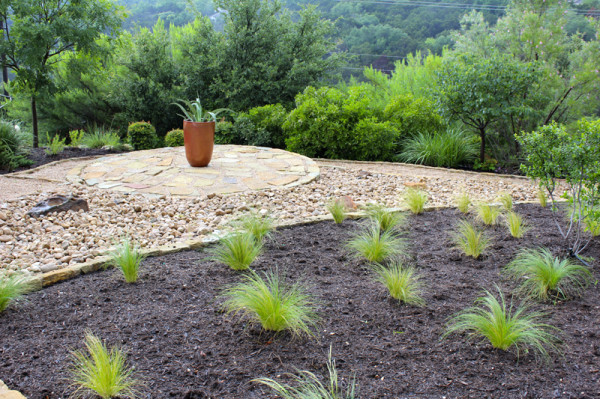 For decades, carpets of lush, green suburban lawns have been icons of an attractive, well-maintained home. But our recent drought has made more than a few homeowners reconsider the composition of their landscape. Last year, almost all of my landscaping clients requested a design that included eliminating at least a section of lawn as part of their overall plan.
For decades, carpets of lush, green suburban lawns have been icons of an attractive, well-maintained home. But our recent drought has made more than a few homeowners reconsider the composition of their landscape. Last year, almost all of my landscaping clients requested a design that included eliminating at least a section of lawn as part of their overall plan.
